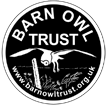Barn Owl life expectancy
How long do Barn Owls live?
Because most Barn Owls die in their first year, average life expectancy (in Britain) is only 18 months. However, a study in Switzerland showed that, if first-year deaths are ignored, the average life expectancy is 4 years.
Because the above figures come from the recoveries of birds ringed as nestlings (at about 5 weeks old), deaths of chicks of under c.5 weeks old are excluded. With an average hatching success of 4 but a fledging success of only 2.5, it is obvious that if the deaths of small chicks was included, overall life expectancy would be even less than 18 months. Having said that, they can be long-lived. The oldest Barn Owl ever found in Britain was 15 years and the European longevity record is 21 years.
What do Barn Owls die of?
Starvation is thought to be the main cause of mortality. It occurs most often amongst nestling, inexperienced young birds during juvenile dispersal, or in periods of severe winter weather.
In adult birds, the peak in mortality is during the late winter/early spring period when small mammal numbers are at their lowest.
For nestlings, survival is controlled largely by food supply. This in turn is determined by habitat quality, prey abundance, the weather, and the abilities and behaviour of the individual parents. It can also be affected by the suitability of nesting places because some nests and nestbox designs are much safer than others.
See the poor nestbox design page for more information.
Man-made hazards
Barn Owls often die from avoidable man-made hazards – many are hit by cars, lorries, and trains. Some fly into overhead wires, or drown in cattle troughs, while others die from eating poisoned prey. Often there are simple, practical solutions to these problems. Click the links to find out how Barn Owls can be protected.
How do we know what Barn Owls die of?
Causes of mortality are based on the recovery of birds that have been BTO ringed. Unfortunately, such results are always biased towards birds that die in conspicuous places. For example, a bird lying dead on a road is much more likely to be reported than a bird that’s died in the middle of a field. Birds found are also only a small proportion of the owls that die. Nevertheless, 1 in 7 ringed Barn Owls are recovered and this is a comparatively high rate. Ring recovery data therefore gives a valuable insight into mortality rates and life expectancy.
Why is Barn Owl mortality important?
Barn Owl mortality and the reasons behind it are important because if we could reduce mortality and increase Barn Owl life expectancy we would be well on the way to securing the future of this wonderful species. Juvenile survival rate has the most influence over total population size. Therefore, reducing the main causes of juvenile mortality should be the most effective way of increasing overall population level.
Other relevant pages
- Barn Owls and major roads
- The problem with rat poison and how to control rats as safely as possible
- Why Barn Owls drown in water troughs and how to make them safe
- Find out how many Barn Owls there are in the UK and how to encourage them

![Mother barn owl with nestlings and eggs [Kevin Keatly] Mother barn owl with nestlings and eggs [Kevin Keatly]](https://www.barnowltrust.org.uk/wp-content/uploads/mother-nestlings-egg-Kevin-Keatly.jpg)

![Emaciated fallen owlet [Margret Robson] Emaciated fallen owlet [Margret Robson]](https://www.barnowltrust.org.uk/wp-content/uploads/emaciated-fallen-owlet-Margret-Robson.jpg)
![Ringing process with nestling [Melanie Lindenthal] Ringing process with nestling [Melanie Lindenthal]](https://www.barnowltrust.org.uk/wp-content/uploads/ring-process-nestling-Melanie-Lindenthal.jpg)
![Barn Owl flying over snowy grassland [Craig Jones] Barn Owl flying over snowy grassland [Craig Jones]](https://www.barnowltrust.org.uk/wp-content/uploads/flying-grassland-snow-Craig-Jones.jpg)